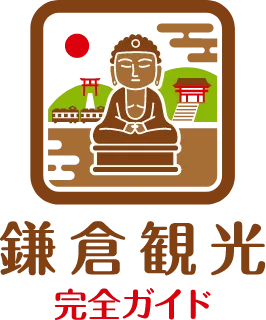Gokuraku-ji Temple (極楽寺)
Discover the Gokuraku-ji Temple
Nestled in the quiet residential area of western Kamakura, Gokuraku-ji Temple is a historic temple of the Shingon-Ritsu sect, founded in the mid-13th century by Hojo Shigetoki (北条重時), the third son of Hojo Yoshitoki (北条義時), the second regent of the Kamakura shogunate. After stepping away from politics, Shigetoki entered the Buddhist path and sought to transform the area—once known as “Hell Valley” (地獄谷), a marginalized settlement—into a place of compassion and salvation. Although he passed away before the project was completed, his sons carried on his will and brought the temple to completion.
Historical Scenery and Architectural Highlights
Today, the temple features a main hall and a rustic thatched-roof gate that together offer a calming and humble landscape. The original layout was modeled after the precinct design of Kofuku-ji Temple (興福寺) in Nara, incorporating stylistic elements from structures like To-ji Temple (東寺) in Kyoto and Kumano Nachi Taisha Shrine (熊野那智大社) in Wakayama. According to tradition, the temple once had 49 sub-temples across an expansive estate, including what is now the Gokurakuji-zaka slope (極楽寺坂). Seasonal flowers such as cherry blossoms in spring, hydrangeas during the rainy season, hibiscus in summer, and plum blossoms in winter quietly enhance the peaceful grounds.
Gokuraku-ji Temple is just a short walk from Tosh’s Place (トシズプレイス), making it ideal for a morning stroll. Visitors can enjoy the temple’s tranquil charm during early hours, away from the busier tourist flow.
Blessings and Cultural Significance
The temple is widely associated with blessings for healing and child-rearing, thanks to the legacy of its founding priest, Ninsho (忍性). Known for his deep commitment to welfare, Ninsho acted upon his “Ten Vows” (十種の誓願), establishing facilities to care for the sick, assist the poor, and even shelter ill animals. His compassionate spirit remains tangible in objects like stone mills and water basins around the temple grounds. Statues such as the Guiding Jizo (導地蔵) found in the area also provide spiritual comfort to visitors.
Pilgrimage Seals and Temple Traditions
Gokuraku-ji Temple serves as a pilgrimage site on both the Kamakura 33 Kannon Pilgrimage (鎌倉三十三観音霊場) and the Kamakura 13 Buddha Pilgrimage (鎌倉十三仏霊場). Visitors can receive a goshuin (御朱印)—a red ink seal featuring the temple’s principal deity, Shakyamuni Buddha (釈迦如来)—revered as a personal token of faith.
How to Get There and Temple Hours
The temple is located just a few minutes on foot from Gokurakuji Station (極楽寺駅) on the Enoshima Electric Railway (江ノ島電鉄), surrounded by a serene residential area. Opening hours are generally from 9:00 AM to 4:30 PM, though seasonal variations may occur, so checking in advance is advisable.
Best Times to Visit
The best seasons to visit are spring, when cherry blossoms bloom, and the early summer hydrangea season. The thatched gate framed with vibrant flowers creates a striking scene during the rainy season. A morning visit offers a quiet, crowd-free experience. While the fall foliage is modest, spider lilies (彼岸花) and sasanqua flowers (サザンカ) add subtle seasonal color.
Please note: Photography is prohibited within the temple grounds, especially inside the main hall and inner sanctuaries. Kindly follow all posted signage to respect the sacred atmosphere.
Nearby Sights Worth Exploring
Within walking distance are other historic sites such as Joju-in Temple (成就院) and Goryo Shrine (御霊神社). For a change of scenery, head to the nearby Yuigahama Main Street (由比ガ浜大通り) and beach area for a peaceful seaside walk. The neighborhood also features charming back alleys and traditional cafes—perfect for extended-stay guests to explore at their own pace.
Who Should Visit?
Gokuraku-ji Temple is ideal for those interested in history, Buddhism, or simply seeking a serene retreat. If you’re traveling Kamakura in a “live-like-a-local” style, consider visiting in the early morning or during twilight hours. A quiet walk in the area after sunset can offer moments of reflection that day-trips often miss.
Wrap-Up: The Spirit of Compassion That Lives at Gokuraku-ji Temple
Gokuraku-ji Temple is more than just a historical landmark—it is a sanctuary where the legacy of Ninsho’s (忍性) compassion still lives on. Blending deep spiritual roots with a peaceful natural setting, the temple invites visitors to slow down and reconnect with themselves. Take a moment before breakfast or after your day’s excursions to experience this hidden gem—especially if you’re staying nearby at Tosh’s Place (トシズプレイス).
